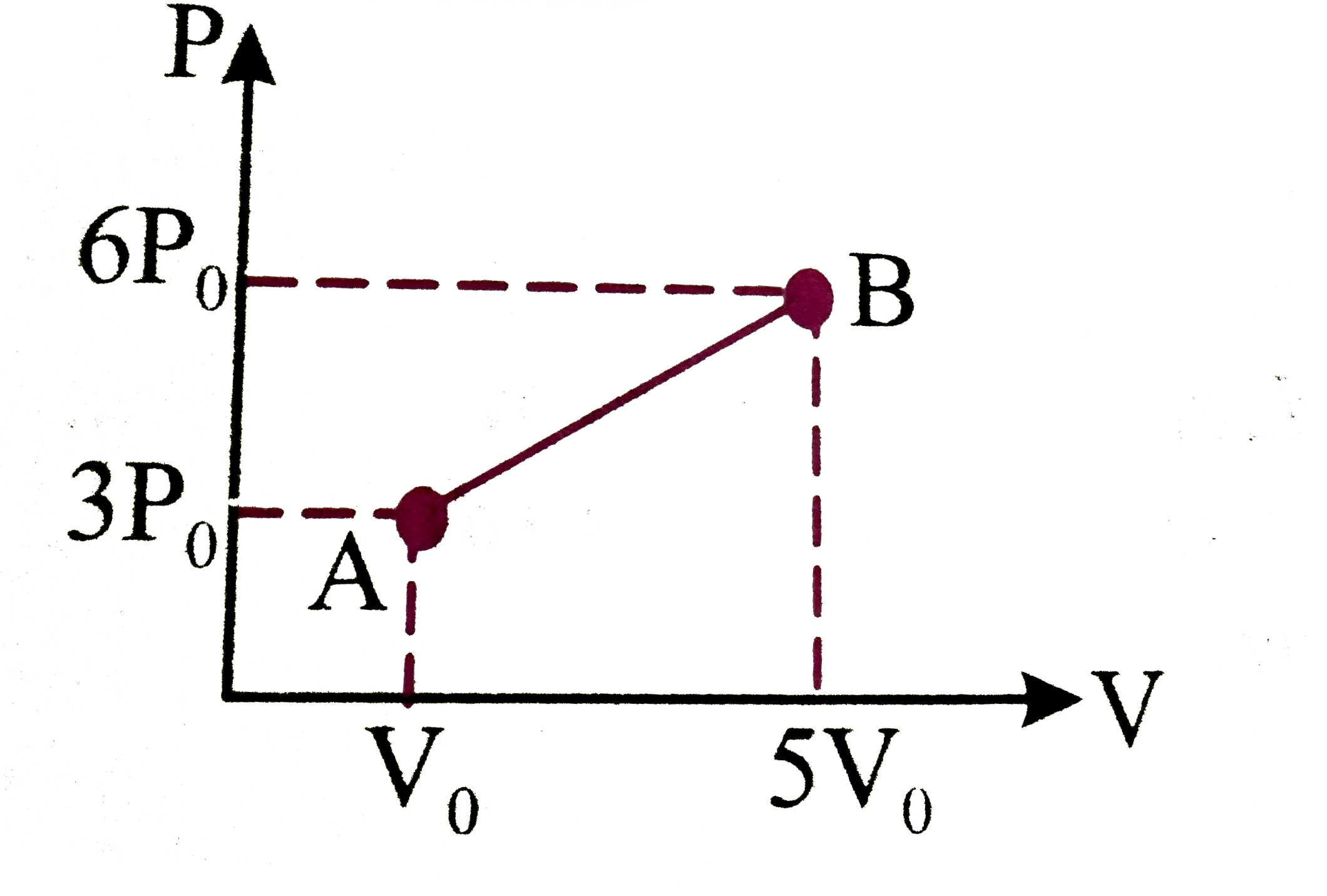In the given elliptical P−V diagram

the work done is positive
the change in internal energy is non-zero
the work done =−(π/4)(P2−P1)(V2−V1)
the work done =π(V1−V2)2−π(P1−P2)2
The correct Answer is:C
c. The work done = area of P−V diagram
a=V2−V12,b=P2−P12
W=−π(V2−V12)(P2−P12)
But the cyclic process is anitclockwise, Hence, the wor done is negative
Topper's Solved these Questions
- KINETIC THEORY OF GASES AND FIRST LAW OF THERMODYNAMICSBOOK - CENGAGE PHYSICSCHAPTER - KINETIC THEORY OF GASES AND FIRST LAW OF THERMODYNAMICSEXERCISE - Multiple Corrects
29 Videos
- KINETIC THEORY OF GASES AND FIRST LAW OF THERMODYNAMICSBOOK - CENGAGE PHYSICSCHAPTER - KINETIC THEORY OF GASES AND FIRST LAW OF THERMODYNAMICSEXERCISE - Assertion-Reasoning
6 Videos
- KINETIC THEORY OF GASES AND FIRST LAW OF THERMODYNAMICSBOOK - CENGAGE PHYSICSCHAPTER - KINETIC THEORY OF GASES AND FIRST LAW OF THERMODYNAMICSEXERCISE - Subjective
22 Videos
- KINETIC THEORY OF GASESBOOK - CENGAGE PHYSICSCHAPTER - KINETIC THEORY OF GASESEXERCISE - Compression
2 Videos
- LINEAR AND ANGULAR SIMPLE HARMONIC MOTIONBOOK - CENGAGE PHYSICSCHAPTER - LINEAR AND ANGULAR SIMPLE HARMONIC MOTIONEXERCISE - Multiple Correct Answer Type
9 Videos
Similar Questions
Knowledge Check
Work done in the given P - V diagram in the cyclic process is
 A2pB2PVCPV/2D3pv
A2pB2PVCPV/2D3pvConsider the modes of transformations of a gas form state A to state B as shown in the given P−V diagram. Which one of the following is true?
 AΔH=q along A→C.BΔS is same along both A→B and A→C→BCw is same along both A→B and A→C→BDw>0 along both A→B and A→C
AΔH=q along A→C.BΔS is same along both A→B and A→C→BCw is same along both A→B and A→C→BDw>0 along both A→B and A→CIn the given (V-T) diagram, what is the relation between pressure P1andP2 ?
 ACannot be predictedBP2=P1CP2>P1DP2<P1
ACannot be predictedBP2=P1CP2>P1DP2<P1
Analyze the action of restriction endonuclease in the given below diagram represented as P and Q .

View SolutionA cyclic process 1-2-3-1 , performed on an ideal gas is depicted in the given V-T diagam show the same process on a P-V diagram and indicate the stages when the gas receives and rejects heat .

View SolutionIn the given (V-T) diagram, what is the relation between pressures P1 and P2 ?

View SolutionIn the following P-V diagram two adiabatics cut two isothermals at temperature T1andT2 (fig). The value of VaVd will be

View SolutionA cyclic process is shown in the P−T diagram. Which of the curves show the same process on a P−V diagram ?

View Solution


